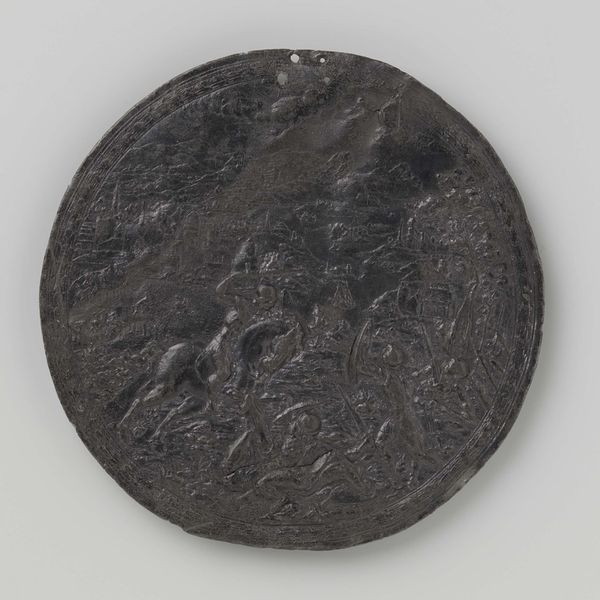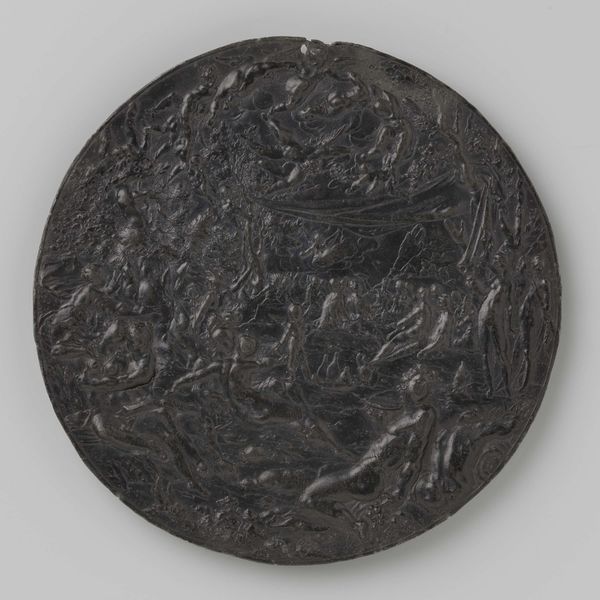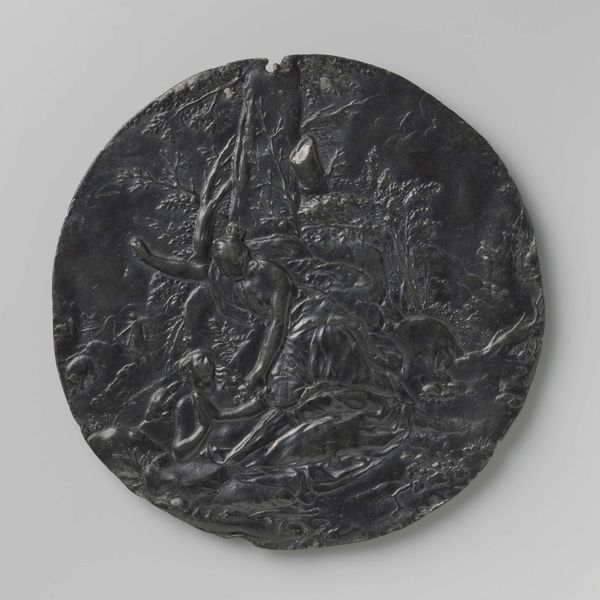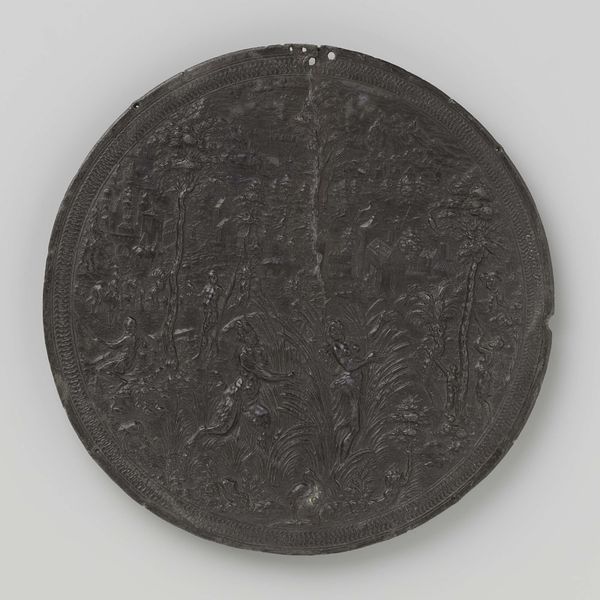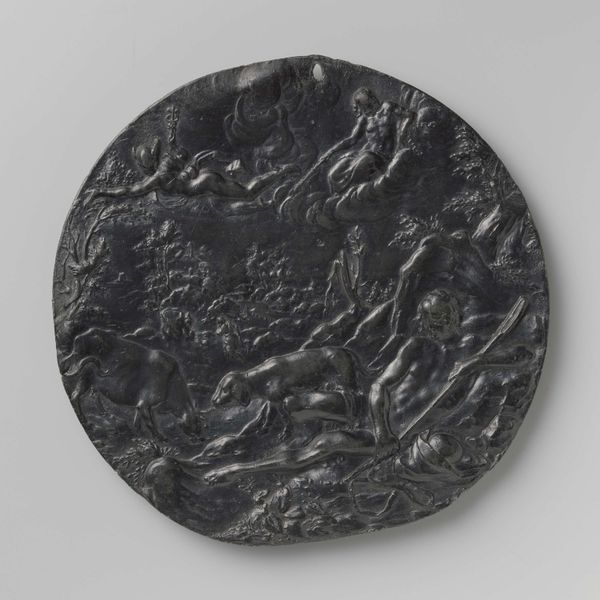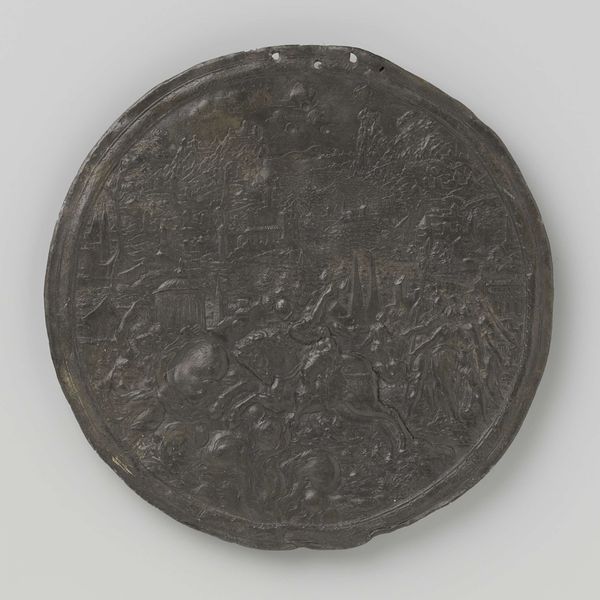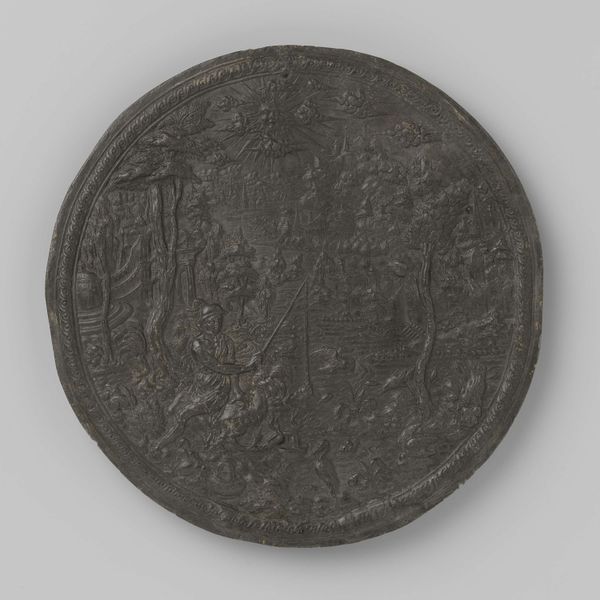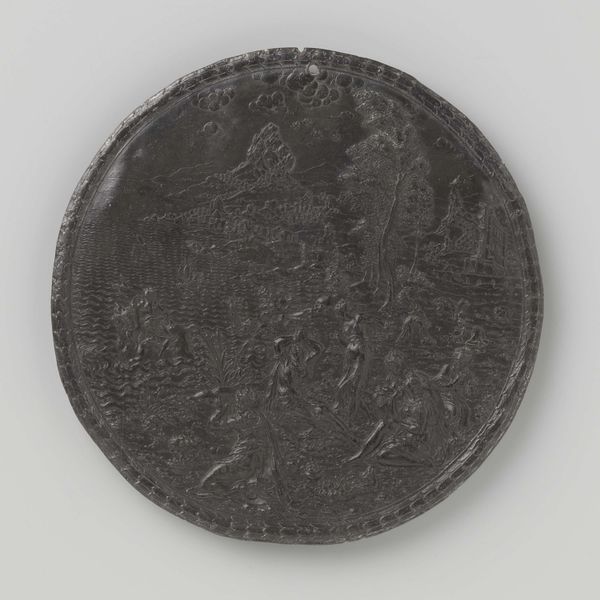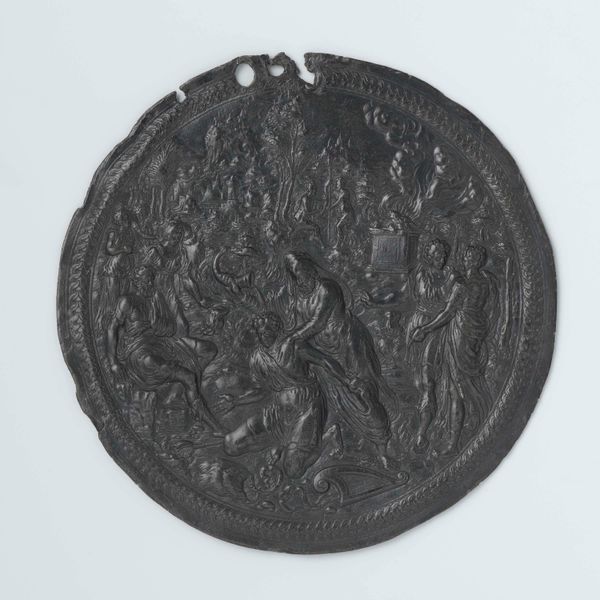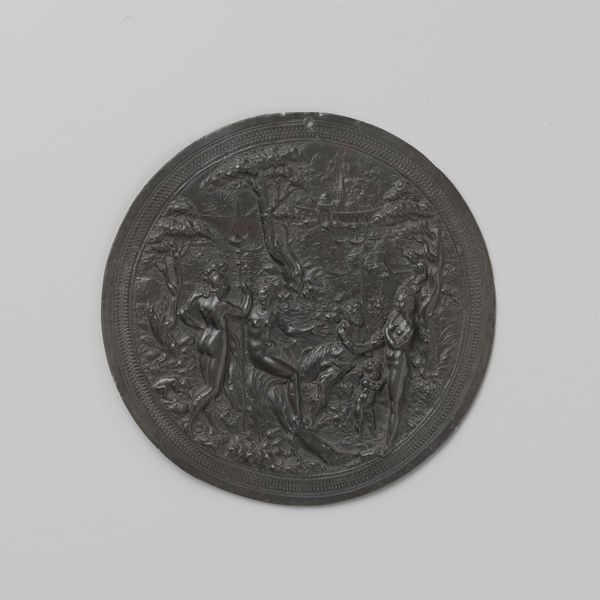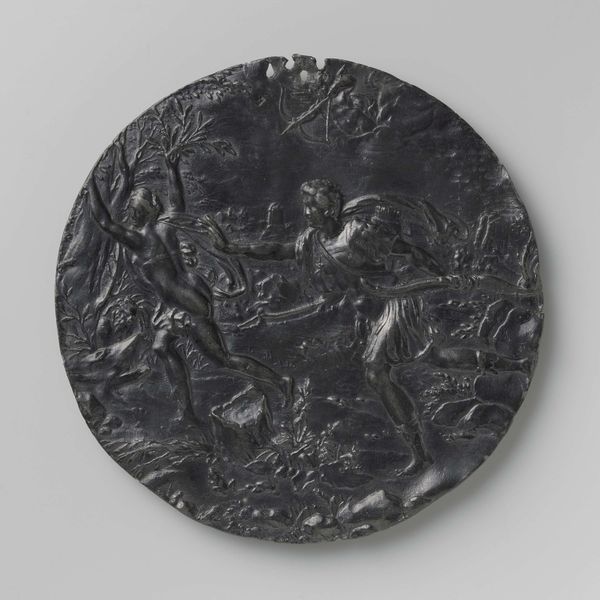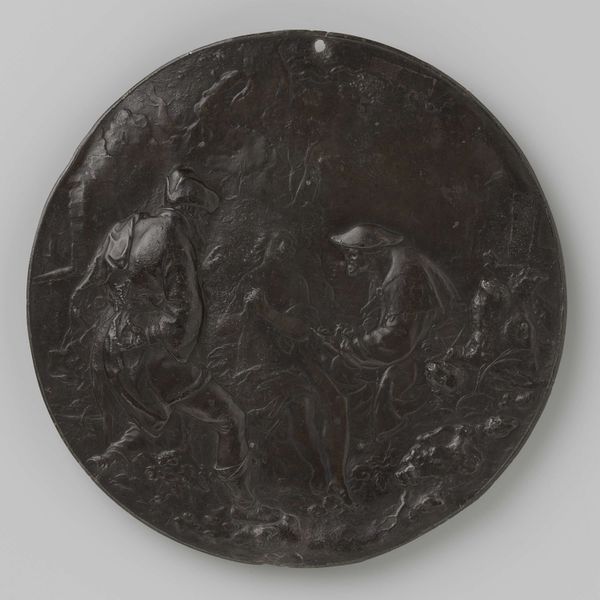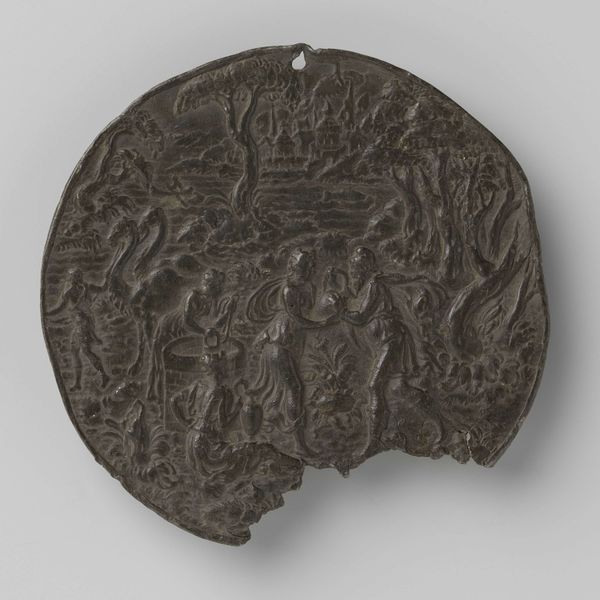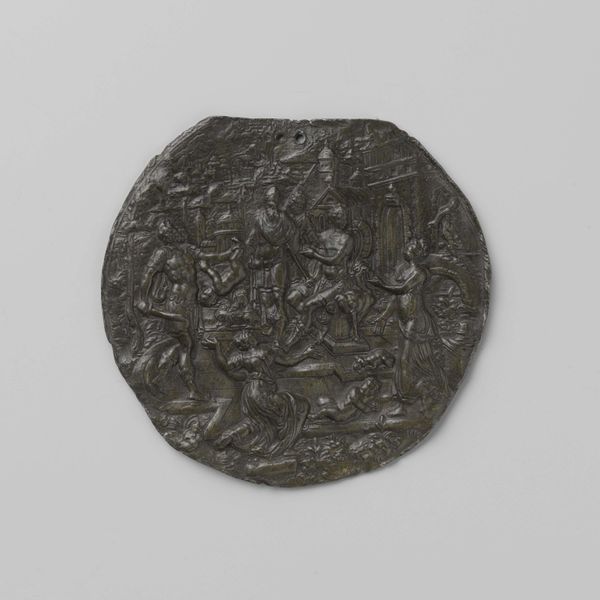
metal, relief, sculpture
#
metal
#
sculpture
#
relief
#
landscape
#
mannerism
#
sculpture
#
ceramic
#
history-painting
Dimensions: diameter 17.5 cm, weight 269 gr
Copyright: Rijks Museum: Open Domain
Curator: What strikes you first about this relief? For me, the density of the imagery pulls me in; I’m immediately searching for the narrative thread. Editor: Dark. Visceral, even. It's like staring into a very old, very detailed dream, one with shifting perspectives and a somewhat somber, oppressive atmosphere. Where does this originate? Curator: This is “Argus and Mercury,” created in 1573. It's an example of Mannerist sculpture, wrought in metal. Its themes draw heavily from classical mythology, the story of Argus, the many-eyed giant, and his encounter with Mercury. Editor: Ah, Mercury! Swift-footed trickster of the gods. Looking closely, there’s definitely a chase element, this overwhelming sense of dramatic activity in an enclosed, almost claustrophobic space. Curator: Note the density of details typical of Mannerism, an echo of the complexities and upheavals of its time, don't you think? But what about Argus, who never sleeps? I find his role fascinating because his vigilance, eventually co-opted into symbolic language for something positive, perhaps as a defender of innocence, ultimately causes his demise. Editor: Interesting point. There is a tragic element to such unwavering attentiveness. Perhaps that is why the composition also conveys something about sacrifice or futility? Given all the eyes of Argus watching the whole landscape, the dark tones contribute to a sort of panopticon-gone-wrong scenario. Curator: The panopticon analogy fits well here, I think. Consider how this historical moment uses symbols—a giant with a hundred eyes—as vehicles for social commentary about the use of power and constant surveillance. Editor: It certainly leaves you pondering the weight of constant vigilance and the blurry line between protection and imprisonment. You know, despite the seriousness of the underlying themes, there's a wild, imaginative flair in this relief, one that mixes anxiety with creative exploration, so to speak. Curator: Yes, it's both visually arresting and intellectually stimulating, a hallmark of Mannerist art. It definitely reveals how potent classical myths are to explain perennial dilemmas! Editor: I couldn't agree more. It makes me think about which symbols we use today that might seem odd or revealing to audiences centuries from now!
Comments
No comments
Be the first to comment and join the conversation on the ultimate creative platform.
